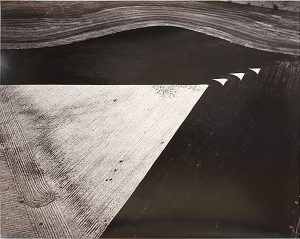
 Paul Strand’s photograph, usually referred to simply as The White Fence, appeared in the pages of the magazine Camera Work, edited by Alfred Stieglitz, who devoted the final two issues of the magazine to Strand’s work. In Strand, Stieglitz saw a new voice, one that plumbed the visual world for its abstract qualities, in keeping with the rise of interest in abstraction among avant-garde painters and sculptors.
Paul Strand’s photograph, usually referred to simply as The White Fence, appeared in the pages of the magazine Camera Work, edited by Alfred Stieglitz, who devoted the final two issues of the magazine to Strand’s work. In Strand, Stieglitz saw a new voice, one that plumbed the visual world for its abstract qualities, in keeping with the rise of interest in abstraction among avant-garde painters and sculptors.
Clearly Strand was drawn to the interplay of shapes and geometric planes in this photograph of a fence and buildings; however, the role of the fence in cordoning off and shaping a space also has metaphoric implications that Strand would continue to explore in later photographs of walls, fences, and gates. Pure landscapes are rare in Strand’s work. Instead he was drawn to close-up views of foliage or, as in the case of this photograph, images that commented on the interactions of humans with the land.

Similar to the aerial work of Marilyn Bridges, an unexpected viewpoint encourages us to consider the altered landscape in new ways. Strand pulls us close to the fence, inviting us to peer between as well as over its slats to the more distant barn and house. And, as in Bridges’ work, geometry signals human dominance over nature.